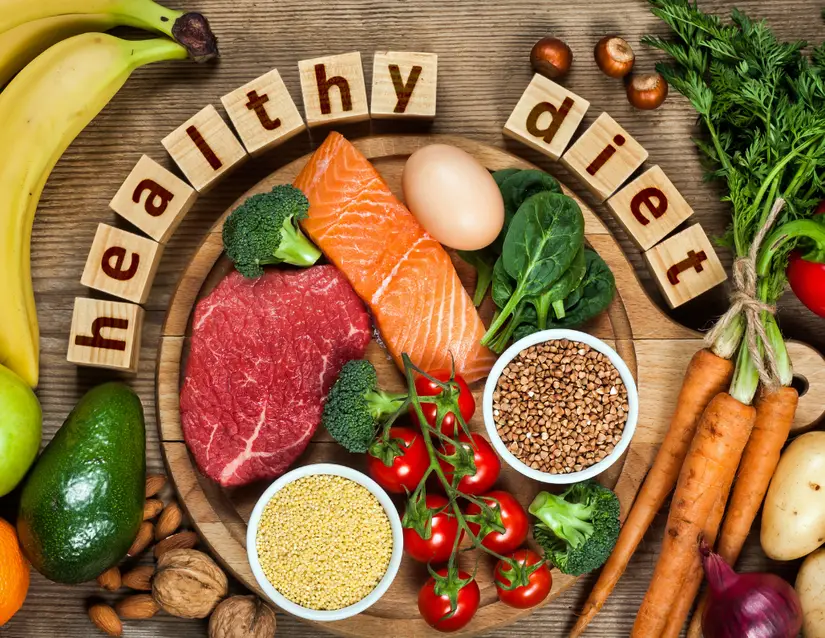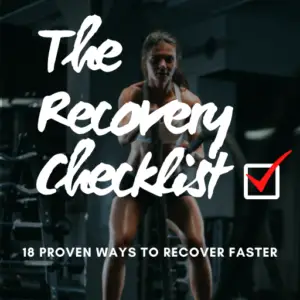Nutrition info is complex, convoluted, and conflicting. So many “experts” have an opinion (and a diet book to sell you).
It’s hard to know what to believe.
Let’s cover the basics, then I’ll explain how the world’s best nutrient will elevate your nutrition game.
The “Macro” View
There are 3 macronutrients: carbohydrates, fat, and protein. And these 3 “macros” account for your daily calorie intake. Carbs and protein have 4 calories per gram. Fat has 9 calories per gram.

That’s why high-fat foods like peanut butter and olive oil are so calorie-dense – 1 cup of olive oil contains an entire day’s worth of calories.
Why Diets Cause Weight Loss
Some nutrition approaches manipulate macros to achieve the intended results – think of classic low-carb and low-fat diets.
Other diets eliminate certain foods. Examples include the ketogenic diet and Whole30. Eliminating food groups naturally alters macro intake.
All successful weight loss diets create a calorie deficit – calorie balance is the primary determinant of weight loss and weight gain. As this intermittent fasting article explains, it’s just physics.
Let’s explore each of the 3 macronutrients – and see if one of them is the world’s best nutrient:
1) Carbohydrates
Many nutrition gurus throw carbs under the bus. And low-carb diets like keto and Atkins are ultra popular.
Anti-carb sentiment has even seeped into family gatherings. We’ve all heard a relative lament, “I gain a pound just by looking at a slice of bread.”
The “carbs cause fat gain” theory stems from the carbohydrate-insulin model of obesity.
Here’s the idea: Eating carbs brings insulin into the bloodstream. Insulin shuttles energy from the bloodstream into fat cells. Therefore, carbs cause fat gain.
Unfortunately, this model is flawed at best and completely wrong at worst (Hall 2017).

A low-carb diet may cause faster weight loss in the first 3-6 months. But it’s no better than a low-fat diet after 1 year.
And very low-carb diets (like keto) are unsustainable over the long-term (Batch 2020). Some research indicates people who eat low-carb diets are more likely to carry excess body weight (Merchant 2009).
Most people don’t realize that carbs are the body’s preferred energy source. Carbs turn into glucose which fuels aerobic respiration. (Remember the Krebs cycle and ATP from biology?)
That’s why runners carb-load before big races. And why athletes drink sugary beverages at game time. Carbs are the best nutrient to fuel intense training and elevate athletic performance.
Carbs aren’t evil or unhealthy. Eating the right carbs at the right time will boost your workouts and push you towards your fitness goals.
Carbs are a key nutrient. But they aren’t the world’s best nutrient.
Learn more about carbohydrate timing in this article: The Best Time to Eat Candy
2) Fat
Much like carbs, diets are “all-in” or “all-out” when it comes to fat.
Keto and Atkins diets endorse high fat intake to enhance feelings of fullness.
Traditional low-fat diets discourage high fat intake due to its high calorie-density.

Does spirited debate make you happier than a Tesla owner cruising past a gas station? If so, consider becoming a saturated fat researcher.
Guidelines advise people to limit saturated fat intake. However, research data and nutrition experts strenuously disagree with these recommendations. It’s the scholarly equivalent of Friday Night SmackDown.
There is consensus that trans fat isn’t healthy. Fortunately, trans fat is being phased out in the United States. It’s no longer added to processed foods.
Overall, sufficient fat intake is crucial for cell structure and endocrine (hormone) function. Multiple guidelines recommend obtaining 20-35% of your daily calories from dietary fat.
Dietary fat is essential for health. But it’s not the world’s best nutrient, either.
3) Protein
Protein doesn’t get the love (or hate) that fats and carbs do. Protein is underrated. In my book, protein is the world’s best nutrient. Let me explain why:
Protein isn’t just for bodybuilders – it’s the best nutrient for Grandma to keep her bones and muscles strong.
Protein repairs damaged tissue and helps you bounce back after training, competition or injury. It’s crucial for muscle strength, bone health and longevity. Plus, protein is an underrated weight-loss tool.

A high-protein diet increases satiety (fullness) and helps you retain muscle mass during a weight loss diet, increasing your metabolism. Protein also takes more energy to digest, increasing the “calories out” side of the energy balance equation.
A high-protein diet works better for long-term weight loss than other low-calorie diets (Moon 2020).
Protein is the world’s best nutrient because it repairs tissue, maintains bone health, promotes satiety, and fuels healthy fat loss and muscle gain.
In other words, protein promotes better body composition and physical health.
How Much Protein Do I Need?
Guidelines recommend daily protein intake of >0.8 grams per kg of body weight. So a 68 kg/150 lb individual should eat at least 55 grams of protein per day.
But athletes and active adults may benefit from up to 2.2 grams per kg of body weight to maximize muscle mass and strength. That’s 150 grams of protein for our hypothetical 150 lb person.
Personally, I aim for 1 gram per lb of body weight. It keeps the math easy.
I weigh 205 lbs, and cramming 205 grams of protein down my gullet is no easy feat.
Here are my top 10 lean protein sources:
Top 10 Protein Sources
1. Grilled Chicken: It’s cliche that healthy people eat chicken. And for good reason. Chicken is a lean, affordable source of protein.
2. Tuna: “Chicken-of-the-sea” is lean, cheap, and easy to find. I eat it straight out of the can.
3. Turkey: Turkey is another lean, accessible protein source. My go-to lunch is ground turkey, rice, and salsa. It’s a magical combo.
4. Whey Protein: Whey is a rapidly-digesting protein. It’s the ideal post-workout protein source. I use whey protein to recover after powerlifting training.
5. Salmon: Packed with healthy fats, salmon is a delicious, nutrient-dense dish. And “it puts hair on your chest,” according to my grandfather.
6. Steak: Keep red meat to 1-3 servings per week, per health guidelines.
Medium-rare, please. Beef. It’s what’s for dinner.
7. Protein Pancakes: Protein pancakes are the perfect pre-workout meal. Carbs + protein + delicious taste. If you haven’t tried Kodiak Cakes, you’re missing out.
8. Eggs: Nothing sates my appetite faster than eggs. Scrambled eggs are a dietary staple when I decide to drop a few pounds.
9. Milk: Dairy intake is linked to better health outcomes (Thorning 2016). In addition to protein, milk contains nutrients like calcium, vitamin D, and potassium.
10. Protein Bars: Convenient and tasty, whey protein bars are my favorite grab-and-go option for lean protein. Of all the protein bars I have tried, Gatorade Recovery Bars are the tastiest.
Readers: What’s your experience with high-carb or high-fat diets? Do you eat a lot of protein? What are your favorite protein sources? Share your thoughts in the comments.
For more evidence-based fitness tips, join the free Facts & Physio Newsletter. Plus, get The Recovery Checklist when you sign up.

